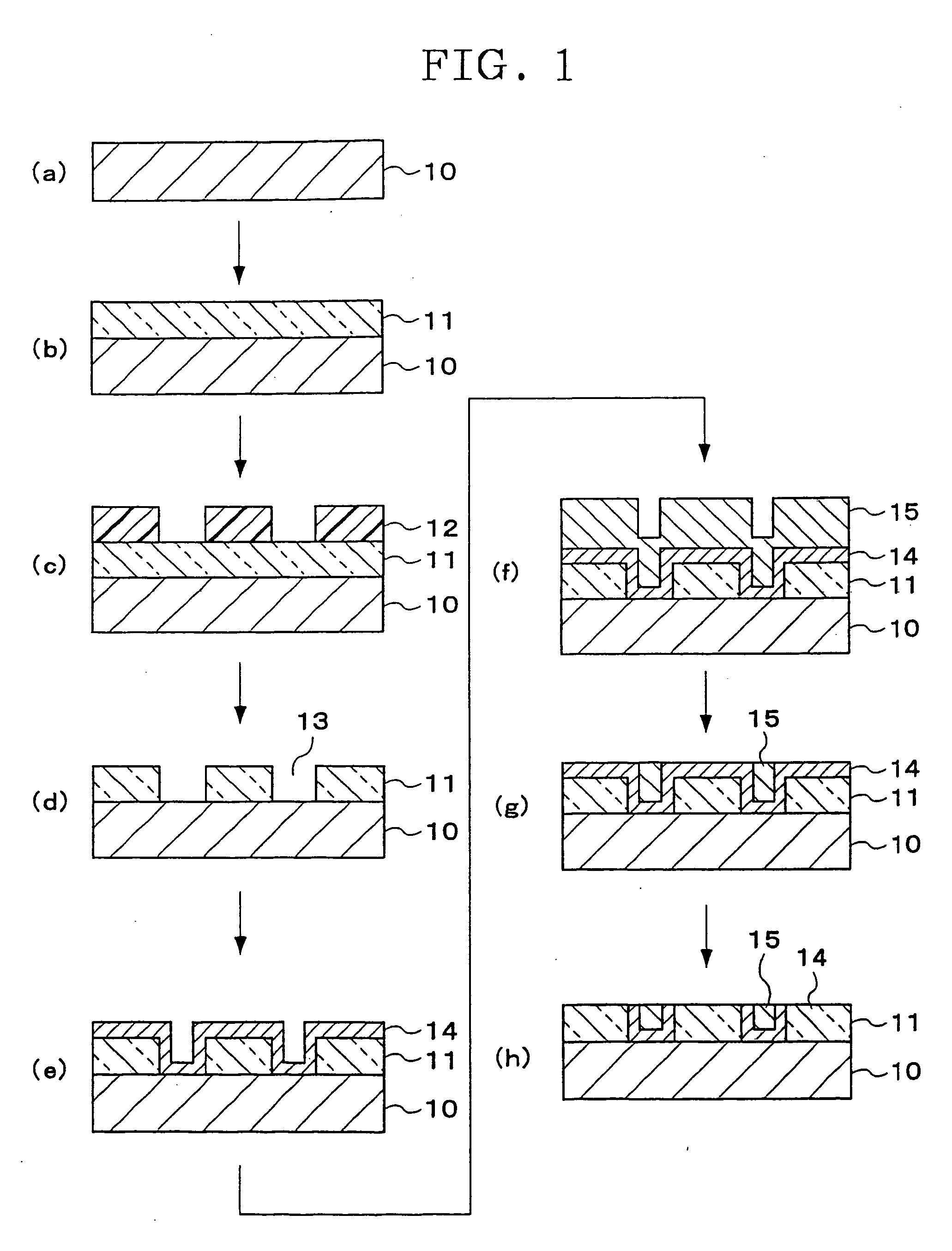Polishing medium for chemical-mechanical polishing, and method of polishing substrate member
a technology of chemical mechanical polishing and polishing medium, which is applied in the direction of polishing compositions, other chemical processes, lapping machines, etc., can solve the problems of thinning, poor electrical characteristics, and higher polishing rate, and achieve high reliability
- Summary
- Abstract
- Description
- Claims
- Application Information
AI Technical Summary
Benefits of technology
Problems solved by technology
Method used
Image
Examples
examples
[0054] The present invention is specifically described below by giving Examples. The present invention is by no means limited by these Examples.
[0055] (1) Preparation of Polishing Medium for Chemical-Mechanical Polishing
[0056] As shown in Table 1, to a mixture of 0.4% by weight of an acid, abrasive grains (but not added in Example 1; 1 part by weight in Examples 2 to 7 and Comparative Examples 1 and 2; and 1% by weight in Examples 8 to 11, 0.05 part by weight of a water-soluble polymer (but only in Examples 4, 6 and 7) and 0.2% by weight of a protective-film-forming agent (BTA), water (98 / 85 parts by weight in Examples 1 to 7 and Comparative Examples 1 and 2, and 97.9% by weight in Examples 8 to 11) was added to effect dissolution, followed by addition of hydrogen peroxide water (a guaranteed reagent, an aqueous 30% solution) as an oxidizing agent for conductors to obtain polishing mediums for CMP. Here, as the abrasive grains, colloidal silica with an average particle diameter of...
PUM
| Property | Measurement | Unit |
|---|---|---|
| Percent by mass | aaaaa | aaaaa |
| Percent by mass | aaaaa | aaaaa |
| Percent by mass | aaaaa | aaaaa |
Abstract
Description
Claims
Application Information
 Login to View More
Login to View More - R&D
- Intellectual Property
- Life Sciences
- Materials
- Tech Scout
- Unparalleled Data Quality
- Higher Quality Content
- 60% Fewer Hallucinations
Browse by: Latest US Patents, China's latest patents, Technical Efficacy Thesaurus, Application Domain, Technology Topic, Popular Technical Reports.
© 2025 PatSnap. All rights reserved.Legal|Privacy policy|Modern Slavery Act Transparency Statement|Sitemap|About US| Contact US: help@patsnap.com

